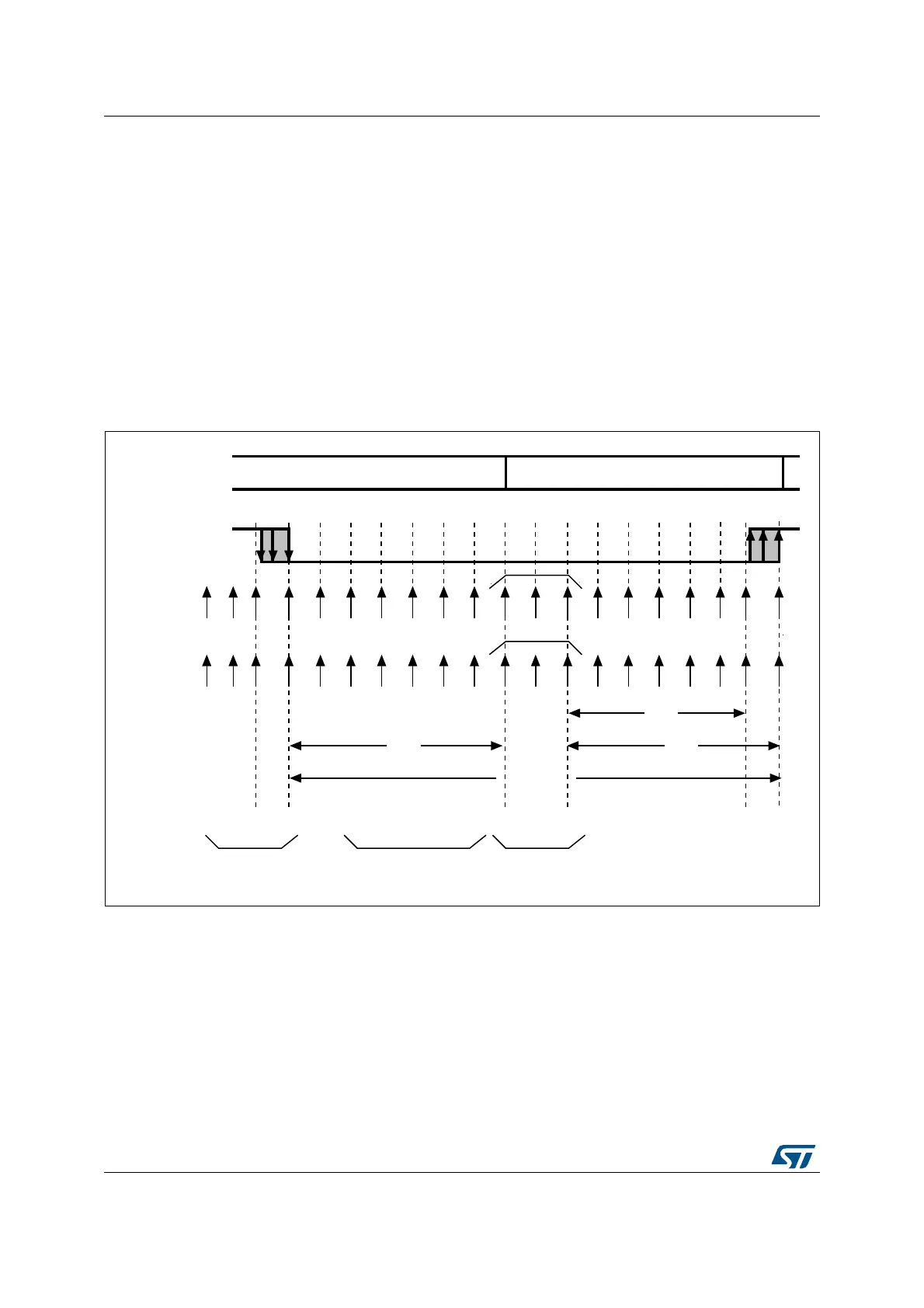Universal synchronous asynchronous receiver transmitter (USART) RM0033
638/1381 RM0033 Rev 9
Idle characters
Setting the TE bit drives the USART to send an idle frame before the first data frame.
24.3.3 Receiver
The USART can receive data words of either 8 or 9 bits depending on the M bit in the
USART_CR1 register.
Start bit detection
The start bit detection sequence is the same when oversampling by 16 or by 8.
In the USART, the start bit is detected when a specific sequence of samples is recognized.
This sequence is: 1 1 1 0 X 0 X 0 X 0 0 0 0.
Figure 227. Start bit detection when oversampling by 16 or 8
Note: If the sequence is not complete, the start bit detection aborts and the receiver returns to the
idle state (no flag is set) where it waits for a falling edge.
The start bit is confirmed (RXNE flag set, interrupt generated if RXNEIE=1) if the 3 sampled
bits are at 0 (first sampling on the 3rd, 5th and 7th bits finds the 3 bits at 0 and second
sampling on the 8th, 9th and 10th bits also finds the 3 bits at 0).
The start bit is validated (RXNE flag set, interrupt generated if RXNEIE=1) but the NE noise
flag is set if, for both samplings, at least 2 out of the 3 sampled bits are at 0 (sampling on the
01 0 X0 X 000 0 X XXXXX
Falling edge
detection
11
1 2 3 4 5 6 7 8 9 10 111213141516
X X X X X X X X 9 10 111213141516
6/16
7/167/16
X
At least 2 bits
out of 3 at 0
At least 2 bits
out of 3 at 0
One-bit time
Conditions
to validate
the start bit
Real
sample
clock
Ideal
sample
clock
RX line
RX state
Idle
Start bit
Sampled values
ai15471b

